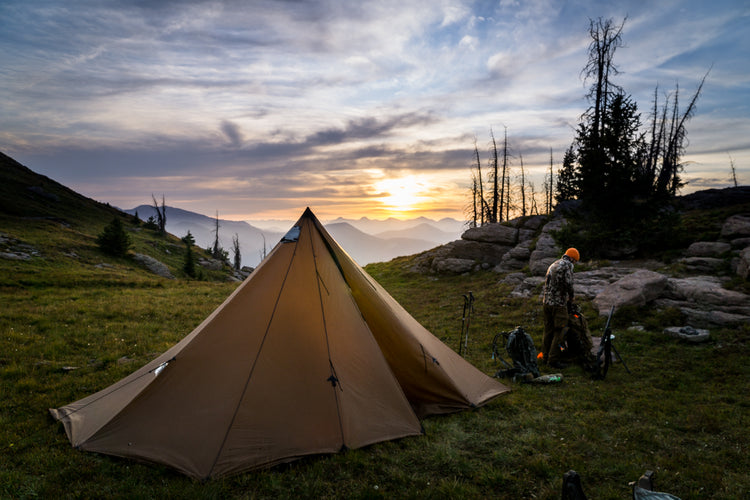Checklists are a valuable tool when preparing for any type of hunting adventure. As hunters, we find ourselves keeping track of a myriad of details. Lists are one way to help make sure none of those details slip through the cracks.
Whether you’re preparing for a specific trip or just keeping a list of your gear repair/replacement priorities for the upcoming season, start making those lists now. When hunting season suddenly rolls around, you won’t feel like you’re behind the curve.
As you make checklists and prepare for the upcoming seasons, here are a few ideas to keep in mind...

Checklists for Everything
On my computer at home, I keep a folder with all of my hunting checklists – and there’s a list for everything. To help me find what I’m looking for when I begin preparing for a new trip, I’ve organized my lists into some basic subfolders: car camping trips, backpacking trips, horseback trips, etc.
When I draw that awesome elk tag in New Mexico this year (fingers crossed) and start preparing for the hunt, all I have to do is find a previous list from a similar hunt to use as a starting point. That saves a great deal of time when organizing gear for a new trip. Whether I’ll be backpacking or camping at the truck, I probably have a previous checklist to work from.
In addition to checklists for gear on each trip, I will often make a checklist for the menu and necessary groceries. Whether that’s packing simple lunches and freeze dried meals for a backpacking trip, or a more elaborate menu for a fixed base camp, creating a menu ensures that I have enough calories to sustain me on a rigorous hunt, without massively over-packing on food.
Finally, I’ve also found it helpful to keep a running list of any hunting gear items that need to be purchased, repaired or replaced. In a perfect world, I’d love to purchase that new tent that I’ve wanted, a new pair of Kenetrek boots, replace an old sleeping bag and maybe even spring for that new rifle I’ve had my eyes on. But in the spirit of sticking to my budget in any given season, I keep a prioritized list of all those needs (and wants). This helps ensure that the most critical needs are met first.
Pay Attention to Weight and Space
One of the most valuable reasons for making checklists well in advance of any hunting trip, is that it allows you to gauge weight and space. This is a critical factor for backpacking expeditions. It’s also helpful on trips where you’ll be traveling by floatplane or horseback. If your outfitter or bush plane pilot has given you a specific weight limit, it’s best to dial in your system now and not wait until the last few weeks leading up to your hunt.
Creating a list now will let you know the exact weight of your backpack or duffel bag. With everything accounted for, you can make any necessary adjustments and feel totally confident that you’re ready for the trip. Especially with supply chain issues affecting many hunting gear retailers, it’s better to make any changes to your system sooner rather than later.

Stay Organized for Quick Packing
One thing that can make your checklists even more efficient is a great system for gear organization. When your hunting gear is spread out or difficult to find, going through your checklist may not be as easy as it sounds. With that in mind, consider creating dedicated storage for all of your gear in clearly labeled containers to keep everything in one place while idle.
For example, you might keep a day trip bin and a backcountry bin. I keep a shelf of small bins for all of those little accessories that tend to get lost – I have one for headlamps, flashlights and spare batteries, another for survival and first aid supplies, one for all of my reed and diaphragm calls, and another for my game bags and kill kit accessories.

However you choose to organize your hunting and camping gear, stick to the system. That way, when you’re going through your checklist for a specific trip, you can simply run through each bin and pick the items you need. After a trip, when your gear is clean and dried, make sure it gets back into the appropriate bin. This makes packing for the next trip a whole lot easier.
Example Checklists:
As you personalize your own lists and create one for each trip this season, here are a couple of examples to get you started...


Tips for Shaving Pounds
On multi-day backpacking trips, of course it’s important to keep your pack as light as possible. Keep in mind that weight will gradually shed as your food supply diminishes. If you plan to move every day and keep camp on your back, a lightweight system is critical. Hiking in to a fixed camp location gives you more flexibility, because you can ditch the weight of your sleep system, cook system and all but your daily ration of food. Hang the remainder of your food supply away from camp when you leave to hunt for the day.
Your sleep system will account for a good deal of weight on backpacking trips. Therefore, minimizing the weight of your tent, plus a high quality down sleeping bag and lightweight pad can make a big difference.
A lightweight tarp or tipi style tent can easily drop several pounds off your shelter. The Seek Outside Silex is a very roomy solo tent that weighs just over a pound. The Seek Outside Cimarron weighs a little more than three pounds with the stakes and pole, and can easily sleep three hunters – or two people with a wood stove and lots of gear. Even the larger Seek Outside Redcliff is light enough for backpacking. With stakes and pole it weighs just a shade over five pounds. It can comfortably sleep four hunters, or three with a wood stove and is tall enough to stand up in.

Another heavy part of your hunting kit to consider is your optics. Depending on the hunt, this can be a tough call. You can ditch the spotting scope and maybe even the tripod and still be effective with only binoculars. It really depends on your preference, the species and the location you’re hunting.
For example, on an archery elk hunt in country that’s mostly heavy timber, you can probably get away with 8x binoculars and no spotting scope or tripod. But on an open-country hunt for mule deer, those needs would be totally different. Personally, it’s much easier for me to lose the spotting scope if weight is an issue. But I hate to leave my tripod behind. Using binoculars on a tripod makes a world of difference.
Always Save Your Lists
When you finalize the packing list for any trip, always save a digital copy. The next time you’re preparing for a similar trip, you can open up the previous list. This makes a much easier starting point. Even if you do the same trip year after year, you’ll probably tweak the list and make changes. But starting with the previous year’s list will give you a big head start on packing. It will also help you recognize which items are the most helpful, and which unused items you can omit on future trips.
Let Us Know If You Have Questions
If you have questions about gear for an upcoming hunt, please don’t hesitate to reach out. All of the items we carry here in our store are items that we personally use and trust in the field. We’d be happy to provide recommendations for any upcoming hunt. We offer free shipping on all orders over $49. Have fun preparing for your hunts this year!

By Ryan McSparran















What backpack would you recommend. I live in the Colorado Mountains. I will be hiking in to camp then hunting from there. Thanks for your expertise.